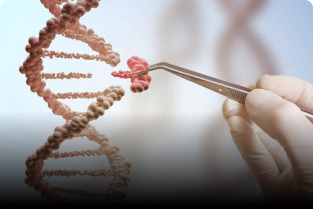Genetic engineering has been one of the most transformative fields in modern science, with applications in medicine, agriculture, and biotechnology. At its core, it involves modifying or manipulating an organism’s genetic material to achieve a desired outcome. While nanotechnology often comes into play in advanced genetic engineering—enabling precise delivery of genetic material or creating novel biomaterials—the question arises: can we develop materials for genetic engineering without relying on nanotechnology, using only natural molecules such as DNA and RNA?
Understanding the Role of DNA and RNA
DNA (deoxyribonucleic acid) and RNA (ribonucleic acid) are the fundamental building blocks of life. They store, transmit, and regulate genetic information. Scientists have long harnessed these molecules for genetic engineering through techniques such as:
-
Recombinant DNA technology – where DNA fragments are joined to produce new genetic combinations.
-
RNA interference (RNAi) – using RNA molecules to silence specific genes.
-
CRISPR-Cas systems – relying on guide RNAs to direct enzymes that cut and edit DNA with precision.
These examples show that DNA and RNA themselves can act as materials in genetic engineering, even without engineered nanostructures.
Materials Beyond Nanotechnology
When we talk about “materials” in genetic engineering without nanotechnology, we are essentially referring to biological molecules, enzymes, and vectors that already exist in nature or can be synthesized in the lab without nanoscale design. Examples include:
-
Plasmids – Circular DNA molecules used as carriers for inserting genes into host cells.
-
Viral vectors – Engineered viruses that deliver DNA or RNA into cells.
-
Enzymes like restriction endonucleases and ligases – Natural proteins that cut and join DNA.
-
Messenger RNA (mRNA) – Now widely used in vaccines, serving as a direct template for protein synthesis.
All of these function effectively in genetic engineering without necessarily requiring nanotechnology.
Why Nanotechnology Is Often Added
Nanotechnology enters the scene because it enhances precision, delivery, and efficiency. For instance, nanoparticles can protect DNA or RNA from degradation in the body and help deliver them to specific tissues. However, these are enhancements rather than necessities. The foundation of genetic engineering—DNA, RNA, and enzymes—existed and was successfully utilized long before nanotechnology became a mainstream tool.
The Limitations Without Nanotechnology
While it is possible to rely only on DNA, RNA, and known biological materials, there are some trade-offs:
-
Lower efficiency of delivery – natural carriers like plasmids and viral vectors may not always reach the desired cells.
-
Reduced stability – naked DNA and RNA degrade quickly in biological systems.
-
Less control – targeting specific tissues or minimizing side effects becomes harder without nanotech-based carriers.
Final Thoughts
The answer is yes—materials for genetic engineering can be created without nanotechnology, using only DNA, RNA, enzymes, and naturally derived systems. In fact, much of the foundational progress in genetic engineering was achieved this way. However, nanotechnology has added a new layer of precision and efficiency, enabling breakthroughs like safer gene therapies and advanced synthetic biology.
Ultimately, the choice between relying solely on DNA/RNA and embracing nanotechnology depends on the goals: for basic genetic manipulation, known materials are sufficient, but for high-precision therapeutic applications, nanotechnology becomes invaluable.

